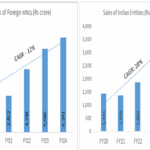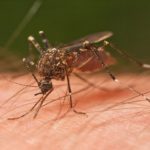An armpit test can help establish the difference between the three
New Delhi, May 31, 2019 :
healthysoch : With the heat wave intensifying across north Indian states, children, the elderly and those with preexisting medical conditions need to be careful. Exposure to severe heat can cause various health issues including heat cramps, exhaustion, and heat stroke. There is thus a need to raise awareness on the importance of keeping well hydrated, not venturing outdoors when the heat conditions are at peak and take precautionary measures.
Clinically, both heat exhaustion and heat stroke may manifest as fever, dehydration and other symptoms such as headache, thirst, malaise, nausea or vomiting, rapid pulse etc. The main difference between heat exhaustion and heat stroke is the presence of sweat in the former and absence in the latter.
Speaking about this, Padma Shri Awardee, Dr K K Aggarwal, President, HCFI, said, “In heat exhaustion, the core temperature is between 37 °C and 40 °C. In heat stroke, the core temperature is very high, > 400C and needs to be lowered within minutes and not hours. This can be done with the help of cool or tepid bathing preferably using damp sponges. However, avoid submersion or the use of any cooling blankets. It is also imperative to watch out for certain ‘red flags’ such as the absence of sweating, dry armpit, non-passage of urine for 8 hours or the presence of high-grade fever in summer. In case these symptoms manifest, it is a must to call for medical help immediately. One must also take precautions in this weather. Those who are on fluid or salt restriction and diuretics must contact a specialist immediately.”
Adding further, Dr Aggarwal said, “The month of Jyestha (May) is for conserving water, maintaining water hygiene as well as donating water as charity to those who have a scarcity of it. It is also important to wash hands after going to toilets, take bath and wash clothes and utensils regularly. In the absence of hygiene, a person may suffer from diarrhea, typhoid and jaundice. To avoid heat disorders, make sure your body is adequately hydrated as well.”
The significance of a ‘medical vrata’ needs to be underlined for everyone during summer. The simpler version of ‘vrata’ can be: not eating carbohydrates at all once in a week and replacing them with fruits and vegetables.
Some summer tips from HCFI
- Avoid prolonged exposure to sun when the temperature is high. Use an umbrella if you need to go out. Wear light cotton clothes to avoid heat absorption.
- Make sure that you are properly hydrated before you step out in the heat. The water requirement in summer is 500 ml more than that in winter. Summer drinks should be refreshing and cool such as panna, khas khas, rose and lemon water, bel sharbat and sattu sharbat.
- Any drink with more than 10% sugar becomes a soft drink and should be avoided. Ideally, the percentage of sugar, jaggery or khand should be 3%, also present in oral rehydration drinks.
- A sign of adequate hydration is passing urine at least once in 8 hours. If you develop heat cramps, drink plenty of lemon water with sugar and salt.







